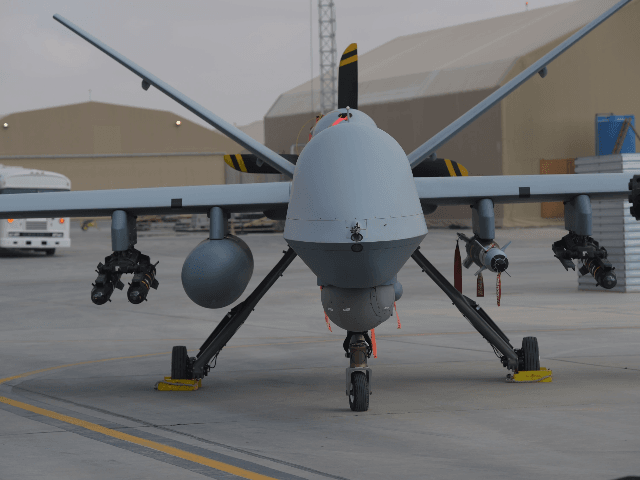A report issued by the U.S. Air Force Central Command (AFCENT) on Monday said 7,423 munitions were released by American aircraft over Afghanistan in 2019, the highest number since the publication of bombing statistics began in 2006.
2019 narrowly edged out 2018 to take the crown, as 7,362 munition drops were recorded in the prior year. AFCENT noted its statistics include both manned and unmanned American aircraft, but not those operated by the Afghan Air Force (AAF).
The AAF, which boasts about 120 aircraft and is still growing, is a subject of controversy in Washington because it remains largely incapable of supporting Afghan ground forces despite an $8 billion American investment in equipment and training over the past decade.
U.S. aircraft are still conducting over 80 percent of the airstrikes in Afghanistan and tend to handle the most vital missions. AAF missions have much higher rates of civilian collateral damage than U.S. airstrikes in Afghanistan, while Afghan commanders on the ground regard their own air force as far less reliable than American planes when air support is urgently needed.
Some analysts see the intense airstrikes of the past two years as dismaying evidence that the Afghan army remains too reliant on air support to bolster its combat effectiveness. As the bluntest of critics put it, the Taliban is holding its own or winning against the Afghan military in battlefields across the country without enjoying any air support at all.
The United Nations blamed airstrikes for about half of the civilian deaths attributed to pro-government forces in Afghanistan during 2019. Afghanistan’s Independent Human Rights Commission called on all parties to the Afghan conflict to exercise more care during military operations to avoid civilian casualties.
“The U.S. has been very explicitly using stepped-up attacks on the Taliban as a form of leverage-seeking,” former U.S. Acting Special Representative for Afghanistan and Pakistan Laurel Miller told Stars & Stripes on Tuesday, suggesting the increased tempo of airstrikes is not inconsistent with U.S. policy goals to seek an exit from the long deployment in Afghanistan.
“In the backdrop of peace negotiations to end the 18-year long war, U.S. aircraft are bombing the hell out of the Taliban and other militants as the warring parties slog through never-ending discussions to bring the fighting to a close,” as the Military Times put it.
The Military Times noted the Pentagon told Congress in 2018 about plans to “intensify pressure” on the Taliban, an effort that prevented the Taliban from taking control of any provincial centers in 2019, according to the new AFCENT report.
Another surge in airstrikes was ordered after negotiations with the Taliban broke down in September 2019. Talks resumed around Thanksgiving but were suspended again after the Taliban attacked Bagram Air Base. The attackers were repelled with heavy airstrikes that contributed to 2019’s record total of bombs dropped.

COMMENTS
Please let us know if you're having issues with commenting.